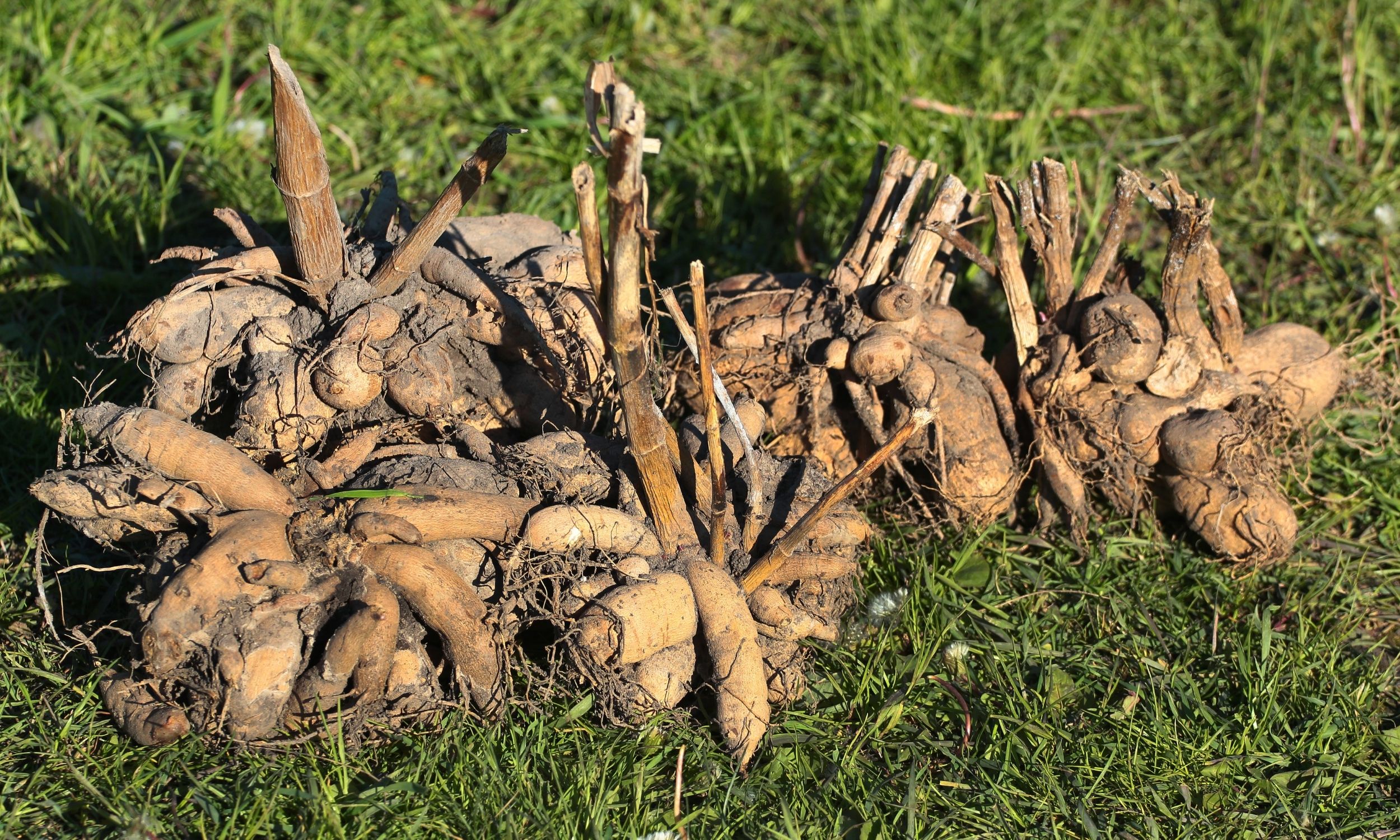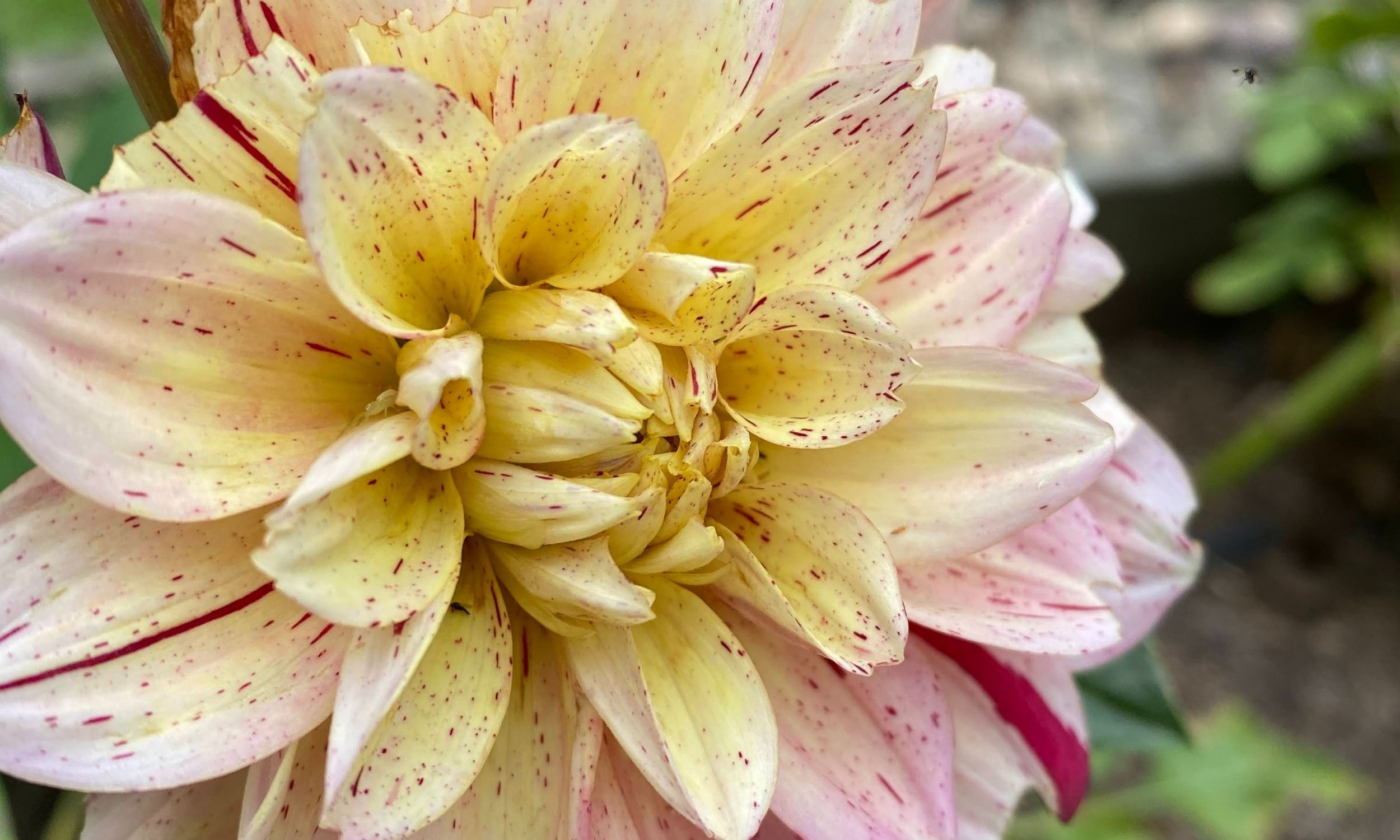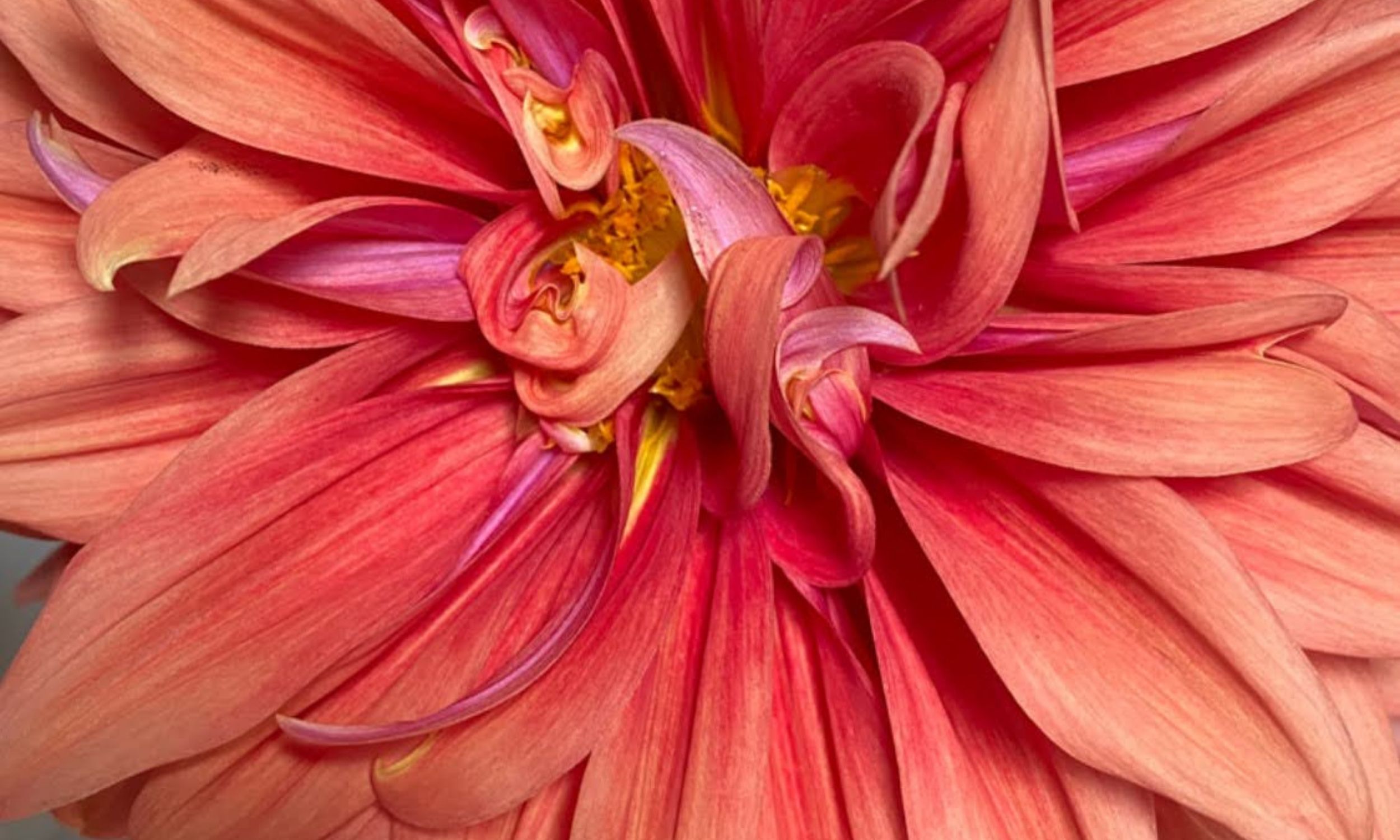Tips for Growing Dahlias in Your Backyard | Growing Dahlias
If you are looking for a beautiful addition to your garden that is both easy to grow and requires very little maintenance, then dahlias might be the perfect flower for you! Dahlias come in a variety of colors, sizes, and shapes, so there is sure to be a variety that will fit well into your backyard landscape. In this blog post, we will provide tips on growing dahlias in your backyard garden, regardless of the type of soil or amount of sunlight you have available.
If you’re looking to add some beautiful blooms to your garden, dahlias are a great option! Dahlias need plenty of sunlight – at least six hours per day. Make sure to plant them in a spot that gets plenty of sun. They need well-drained soil. If your garden has clay soil, be sure to mix in some compost or other organic matter to help the soil drain better. Dahlias need regular watering, especially during hot weather. Make sure to water them deeply once a week, and keep an eye on them during periods of drought. Dahlias can be fertilized with a balanced fertilizer every month or so. Mulch around the plants to help keep the soil moist and cool.
Dahlias are beautiful flowers that add color and life to any garden. With a little bit of care, you can enjoy these lovely blooms in your backyard all season long! Keep reading to learn more about how to plant and care for these beautiful flowers.
Disclosure: Some of the links below are affiliate links, meaning, at no additional cost to you, I will earn a commission if you click through and make a purchase.
What are Dahlias?
Dahlias are a type of perennial flower that is native to Mexico. They come in a variety of colors, sizes, and shapes, making them a popular choice for gardeners around the world. Dahlias can be grown in almost any climate, but they thrive in warm weather climates with plenty of sunlight.
Types of Dahlias
There are over 30 different types of dahlias, including Cactus Dahlias, Ball Dahlias, Collarette Dahlias, Dinner Plate Dahlias (the largest type), and many more! How do you choose which one is right for your garden? There are a few things to consider before making that choice.
First off, think about the amount of sunlight your garden receives. Dahlias need at least six hours of direct sunlight per day to bloom properly. If you don’t have that much sun available, consider planting a variety of dahlia types that will thrive in different amounts of light.
Secondly, think about the type of soil you have in your garden. Dahlias prefer well-draining soil with a pH level between six and seven. If you don’t have that type of soil, then there are two options available: either amend your current garden plot or choose another location in the yard where dahlias can thrive!
Dahlias Tubers vs Dahlia Seeds
There are two types of dahlia plants: tubers and seeds. Tubers have been used for many years as a cut flower since they bloom quickly after planting, making them ideal for decorating with during special occasions like weddings or birthdays. Seeds must be planted in the spring to ensure proper growth before winter sets in again next year when they will not bloom as well.
Where to Buy Dahlia Tubers and Seeds
If you are interested in growing dahlias in your backyard garden, the best place to buy tubers and seeds is from a local nursery or online. Be sure to ask the staff at the nursery about which type of dahlia will grow best in your area!

Planting Dahlia Tubers
Where to Plant Dahlias
Dahlias need at least six hours of sunlight per day to grow properly. If you live in an area that has a lot of trees or other obstructions, consider growing your dahlias in a container so that they can get the proper amount of light. Dahlias also need well-drained soil; if your garden has heavy clay or loamy soil, then you may need to add a layer of compost before planting your dahlias.
Good Soil for Dahlias
Dahlias prefer well-drained soil, so it’s important to choose the right kind of soil for your dahlias. The best types of soils are sandy loam, but if you have heavy clay then adding a layer of compost will help with drainage issues and provide nutrients that dahlia plants need!
When to Plant Dahlias
Dahlias can be planted in the spring, summer or fall. The best time to plant them is when there are no more frosts expected for a few weeks so that your dahlia plants have enough time before winter arrives!
Watering Dahlias
Dahlia plants require regular watering throughout their growing season, but don’t let the soil become soggy – this could cause root rot and kill off some roots before blooming begins!
Dahlias need about one inch of water per week, either from rainfall or watering your plants. Be sure not to overwater them, as this can lead to root rot and other diseases. You will be able to tell if your dahlia plant needs water if the leaves are wilting or curling up at all.
To make sure that your plant gets enough water, check the soil every day and water whenever the top inch of soil feels dry to the touch.

Supporting Your Dahlias
Once your dahlias have started growing, it’s important to provide some type of support so that the plants don’t fall over. There are two ways to do this: by using stakes or by using netting.
If you are using stakes, then drive them into the ground next to the plant and tie the stem of the plant to the stake with some twine. Make sure that the stakes are sturdy and won’t fall over, as this could damage the plant.
If you are using netting, then loosely wrap it around the stem of the plant and tie it in place with some string or twist ties. Be careful not to pull too tight on the netting, as this could cause damage to the plant.
Pinching Dahlias for More Blooms
Pinching dahlias is a way to ensure that your plants will produce more blooms this summer. Pinching involves pinching off the top of each stem so it won’t grow any taller than what you want it to be. This process should be done before flowering begins in late spring or early summer (depending on where you live).
If you’re growing your dahlias in a container, then you can use scissors to cut off the top of each stem about two inches above where it attaches to the main plant. If you’re growing them directly in their garden beds, then pinch off any new growth from those stems with your fingers or pruning shears before they start producing flowers.
This pinching process should be repeated every couple weeks until the end of summer when your dahlias stop blooming for that season! This will encourage more stems to grow and produce even more flowers next year!
If you don’t pinch back any new growth throughout this time period, then only one stem per plant will be able to produce flowers and they won’t last as long either since there isn’t enough energy going into them.
Disease and Pest that Affect Dahlias
There are a few common diseases and pests that can affect dahlias. Here is what you need to know about them so that you can properly care for your plants if they get sick or infested with bugs!
Root Rot: Root rot occurs when the soil stays too wet for long periods of time, which causes fungus to grow on the roots of the dahlias. This will kill off the root system and make the plant unable to absorb water or nutrients, which will eventually cause the plant to die.
One way to prevent this from happening is by watering your plants properly – make sure that the soil is never too wet! You can also use fungicide if you think your dahlias might have root rot but don’t know how bad it is yet.
Rust: Rust occurs when the leaves of the plant turn brownish red and start to fall off, which happens if they get wet from rain or dew overnight. To prevent this disease from spreading, remove any infected leaves as soon as possible and keep an eye out for more symptoms of rust so that you can treat the plant accordingly.
Mosaic Virus: Mosaic virus is caused by a type of bacteria that lives on plants and causes them to have stunted growth with yellow or white spots all over their leaves, which eventually turns brown or black before falling off completely. You cannot cure this disease, but you can prevent it by keeping your hands clean while working with other plants and not touching the vines or leaves of the dahlias.
Aphids: Aphids are tiny insects that feed on plant sap, which causes them to produce a sticky substance called honeydew (which turns into sooty mold). This sticky substance will attract other bugs to the plant, which will then cause even more damage.
If your dahlias are infested with aphids, you can use a hose to spray them off the plants or use an insecticidal soap to kill them. Be sure to follow the directions on the bottle carefully so that you don’t harm the plants!

Common Pests that Affect Dahlias
Insects are the most common pests that will attack your dahlias. These bugs feed on plant sap and make it difficult for them to grow, so they need to be removed as soon as possible if you want your plants healthy! Here’s what you should know about these insects:
Aphids: See information above.
Spider Mites: Spider mites are tiny red bugs that spin webs on the underside of the leaves and suck out the sap, which will cause the leaves to turn yellow or brown and eventually fall off. You can usually see them with your naked eye, but if you’re not sure then use a magnifying glass to get a closer look.
To get rid of spider mites, you can use a hose to spray them off the plants or use an insecticidal soap to kill them. Be sure to follow the directions on the bottle carefully so that you don’t harm the plants!
Thrips: Thrips are tiny black bugs that suck the juice out of the flowers and leaves, which will cause them to turn yellow or brown. You can usually see them with your naked eye, but if you’re not sure then use a magnifying glass to get a closer look.
There isn’t much you can do to get rid of thrips once they’ve infested your plants, but you can prevent them by keeping an eye out for any signs of infestation and treating it before they spread too far.
Other Insects: There are many other insects that can harm your dahlias if left unchecked, including caterpillars or worms that eat the leaves and flowers; slugs and snails who crawl along the stems to suck out plant sap; and ants that feed on aphids but also like to eat dahlia buds before they open up into flowers!
How to Combat Pests: There are several different ways you can combat pests, including using an insecticidal soap or a hose with water pressure strong enough to spray them off the plants. You should also be sure to remove any infected leaves or plants as soon as possible so that the disease doesn’t spread. If you’re having a lot of trouble with pests, you might also want to consider using a pesticide, but be sure to read the directions carefully and only use it if necessary!
There are also many beneficial insects that can be used for pest control. Our favorite is ladybugs. Learn more about ladybugs in the garden HERE.
Fertilizing Dahlias
In order to get blooms that are as big and beautiful as possible, you’ll need to fertilize your dahlia plants once a week starting in midsummer. Use a balanced fertilizer like 20-20-20 or something similar; be sure not to use too much though, because this could harm the plant.
We love Dr. Earth Flower Girl.
Deadheading Dahlias
Once your dahlias have finished blooming, it is important to deadhead them so new flowers will form. This simply means removing any wilted or spent flowers from the stem; doing this on a regular basis will help keep your dahlia plants healthy.
Learn More About Deadheading- How to Deadhead Flowers
When to Harvest Dahlias for Bouquets
When harvesting dahlia flowers, be sure to cut the flowers in the early morning or late evening. Start with a clean pair of garden shears to make your cuts. I like to bring a cool bucket of water into the garden with me so I can immediately place my dahlias in water.
After harvesting, boil a pot of hot water. Make a fresh horizontal cut in your dahlia stem and dip your stems in hot water (water should no longer be boiling, but still hot). Dahlias have a hollow stem and this will help your dahlias to start drinking water and hopefully prolong their vase life. If possible, place dahlias in a cool location for 12-24 hours to rehydrate (do not place in a fridge with fruits and vegetables).
Do Dahlias Come Back Every Year
Depending upon your growing zone, dahlias may come back every year. In zones 8-10 you can actually leave your tubers in the ground over winter. Below zone 8, it is recommended that you remove your tubers from the ground to protect them from freezing and rotting over winter.
Even if you live in growing zones 8-10, it is recommended that you dig up your dahlia tubers every few years to divide the tubers.
This will help to keep your dahlias growing strong and healthy.
So, there you have it! Everything you need to know about growing beautiful dahlias in your backyard. Follow these tips and you’ll be rewarded with loads of gorgeous blooms all season long!
If you’re looking for more information on growing dahlias, be sure to check out our other blog posts on the subject:
Learn More About Digging Up your Dahlia tubers and storing them in our next article: XXX.

Grow Cut Flowers
Get Started NOW Bundle
How to Plant Beautiful Bouquets eBook (what to plant to great stunning bouquets). Garden Planner & Journal (planning pages to help you stay organized in the garden).
